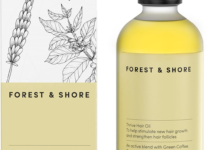Ever wondered how to get body after a Keratin treatment?
Well, strap in, hair lovers, because we’re about to embark on a fun-filled journey to bouncy, vivacious tresses!
Let’s decode the secret to luscious locks that scream volume even post-Keratin.
Trust me, as a hair enthusiast; there’s nothing like the thrill of mastering the art of hair volume!
Table of Contents
Key Takeaways
- Balance is Key: Enjoy the benefits of Keratin without compromising volume by using volumizing products and the right styling techniques.
- Sulfate-Free is the Way to Go: Always opt for sulfate-free shampoos and conditioners to protect and preserve your Keratin treatment.
- Embrace Your Curls: Maximizing the natural volume of wavy or curly hair can help maintain a fuller look after a Keratin treatment.
8 Simple Ways To Get Body After A Keratin Treatment
Here are simple fixes that could add volume to your hair after a keratin treatment. Let’s dive in.
1. Focusing On Each Hair Strand
Working on each hair strand is one great way to avoid having an illusion of volume when increasing hair’s body.
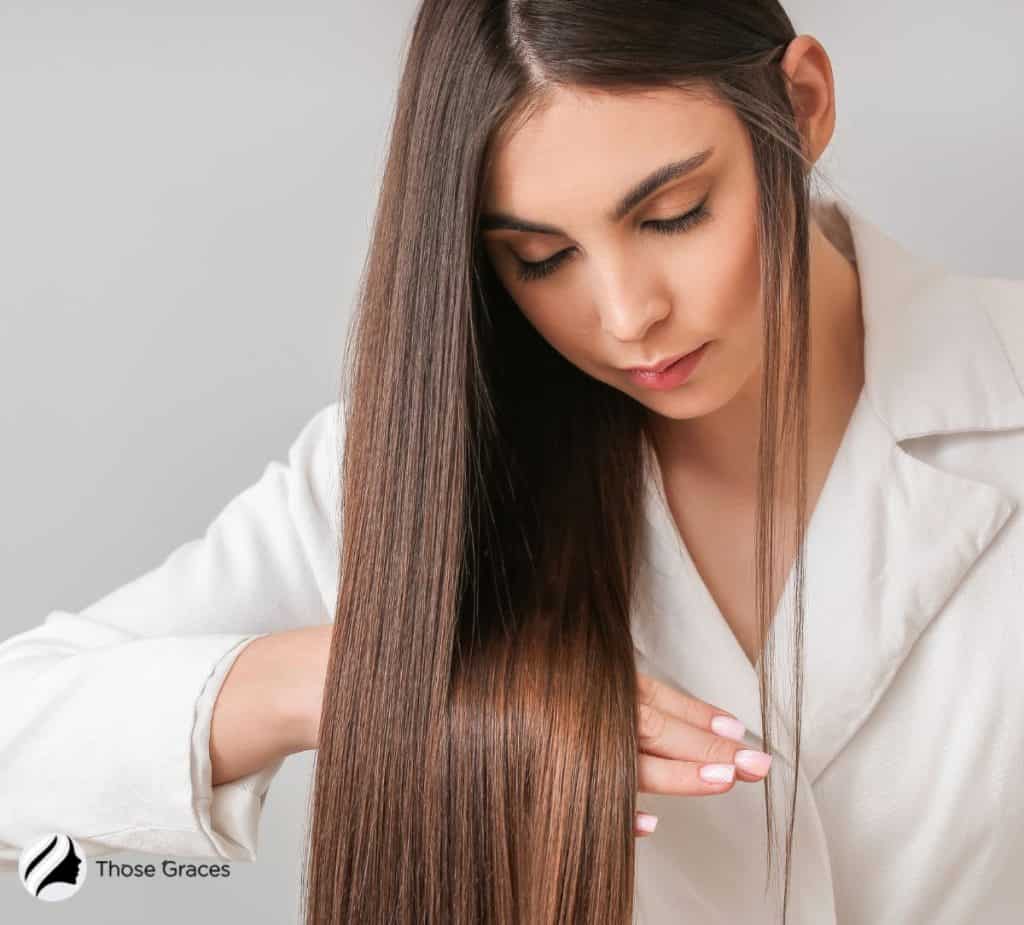
For example, applying hair dye to get your hair colored will give an optical illusion of your hair volume.
Instead, there are volumizing products designed to make hair clean without stripping off nutrients and oils from the hair shaft that you can use.
In addition, after a Brazilian keratin treatment, you should avoid treating your hair with styling products that make your hair feel weighty.
Rather than waxes, heavy serums, and creams, you should use keratin hair products such as hair thickening sprays.
2. Changing Your Hairstyle
Your hairstyle plays a great role in determining how people view your hair texture, hair color, and even hair volume (1).
Chemical services for hair, such as keratin hair treatments, will make your hair smooth and give you straight hair.
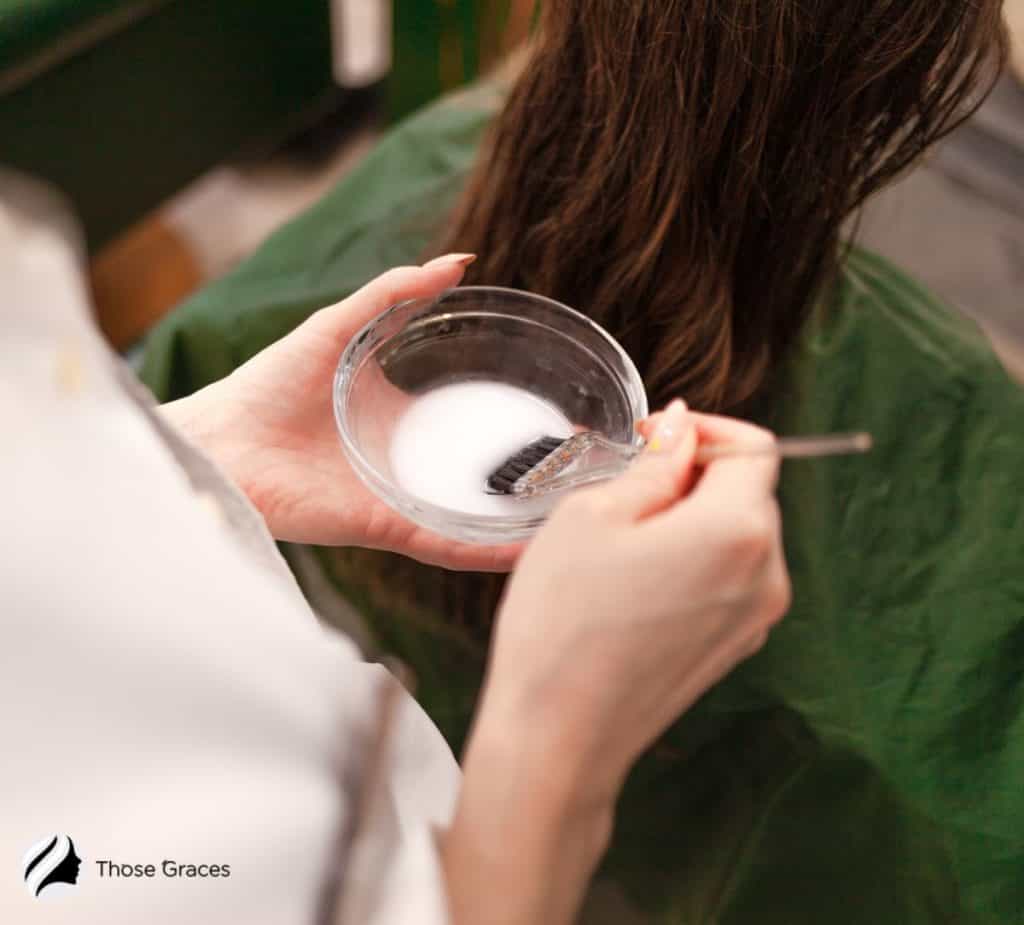
Keeping straight hair will only emphasize the lack of hair volume, as the chemical treatment will deplete natural curls.
The curl patterns in wavy hair and curly hair have the advantage of making your sleek hair appear voluminous.
Also, to avoid applying too much heat to your hair when styling, you can consider using a keratin-infused thickening product after getting your hair wet with excess water before braiding and getting your hair dry.
Given that keratin can alter curl patterns, you might ask, ‘What does keratin do to curly hair?’
Good news – I have a whole piece discussing just that! Dive into our in-depth article to understand the relationship between your curly locks and keratin treatments.
3. Stop Using Bad Brushes
Avoid using hair brushes that can cause hair damage or even break your hair strands, resulting in hair loss.
Brushes made of rigid plastic or metal, especially round metals that can cause heat as you apply them through your hair, should be avoided.
I recommend using a boar bristle brush for your hair after a keratin treatment.
4. Toweling Your Hair The Right Way
The kind of towel you use and how you towel your hair can also affect how your hair volume appears.
Vigorously rubbing your hair with a rough cotton towel after a bath will not help your keratin-treated hair.
A microfiber towel is a better option for maintaining hair volume after having keratin hair treatments.
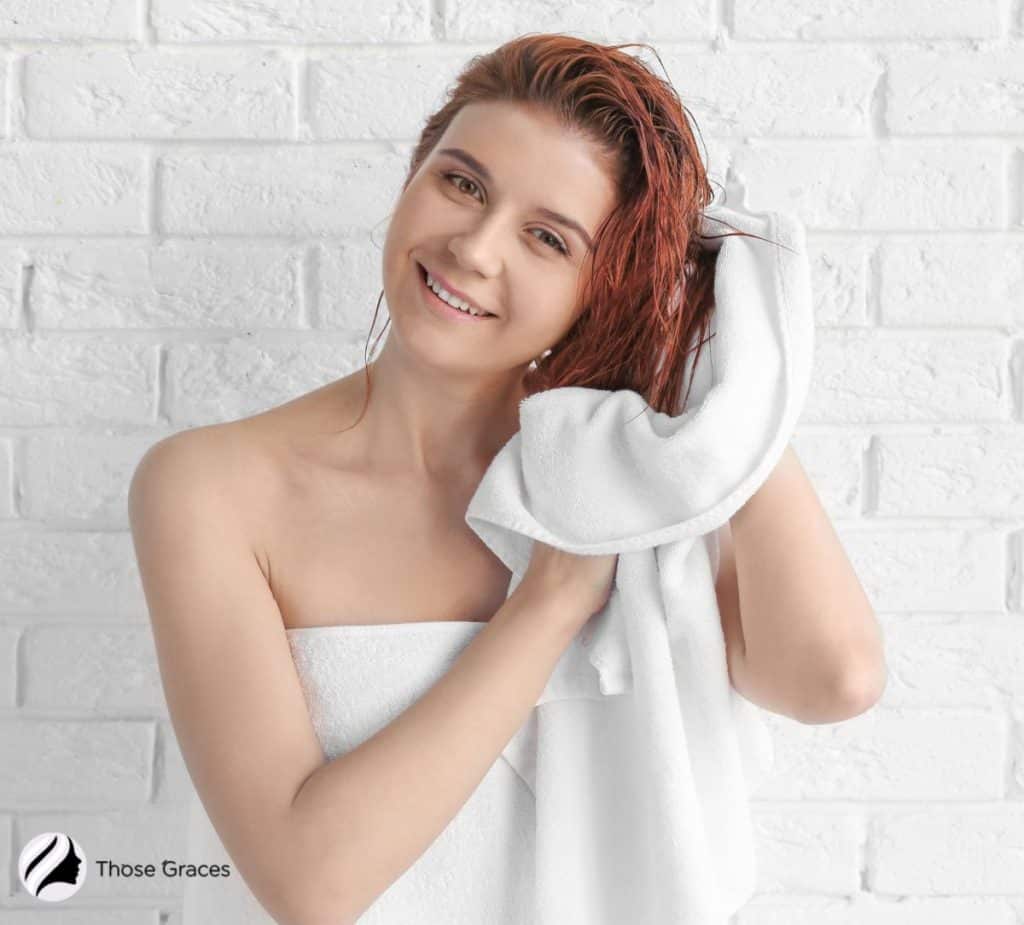
Also, rather than using cotton pillowcases, I recommend using either a silk or satin pillowcase for your sleek hair during sleep after a Brazilian blowout.
5. Using Hair Volume Boosters
Keratin shampoos and conditioners are hair volume boosters because they can help strengthen your hair and prevent hair breakage and damage that can result in hair volume depletion (2).
A keratin complex helps apply keratin supplements to the hair cuticle’s core and a keratin coating over the outer layer of the hair shafts.
Keratins are natural proteins in hair, skin, and nail composition.
Weeks and months into a keratin treatment, you can refresh the keratin protein applied to the hair using keratin-infused volumizing products.
Ensure you go for a sulfate-free shampoo, i.e., devoid of sodium lauryl sulfate/sodium Laureth sulfate.
According to research, sulfate-containing shampoos have detergent-like abilities, which can be dangerous for keratin-treated hair (3).
If you are using a volumizing conditioner, please apply it from the midshaft of your hair and not from the scalp.

Conditioners can trap oil at the scalp, producing a result that affects how your hair volume appears.
Speaking of shampoo, you might wonder, ‘Can you use dry shampoo on keratin treated hair?’
Well, you’re in luck because we have an entire article dedicated to that topic. Check it out for more detailed insights into maintaining your keratin treatment!
6. Massaging Your Scalp
Massaging your scalp is another way to improve hair volume.
This will help rejuvenate the circulatory blood vessels at that level, significantly impacting the supply of oxygen and nutrients to your hair follicles.
The hair follicle is the part of the hair where keratin-producing cells emanate.
7. Haircutting
As controversial as this sounds, cutting your hair truly makes your hair appear more voluminous. The longer your hair is, the flatter it will look.

As good as it is to have your hair smoother and enjoy what it feels like to have sleek and shiny hair, keratin hair treatments will make your hair appear flattered if you have long hair.
A disadvantage to long hair is that its weight makes it harder for its roots to lift and gain body.
Hair cutting is a good recommendation for those who want to add volume to their hair after a keratin treatment.
8. Changing Your Hair Part
Maintaining the same hair part for too long can make your hair dull and flat. A simple switch of hair parts will help lift your hair from the roots.
Also, using flat irons can help add some waves to your hair, helping it gain body. Applying medium heat to your hair cuticle constantly will also help to boost hair volume.
What Happens When You Get Body On Your Hair After A Keratin Treatment?
Getting body on your hair after a keratin treatment has beneficial impacts and can also have side effects. Let’s start by looking at the pros.
Pros
1. Improvement of overall appearance of hair
Adding body to your hair generally makes your hair visibly attractive, especially with the combined effects of a keratin treatment.
2. Hair volume-boosting products will help add lift and texture to hair
As much as the focus is primarily on increasing your hair volume if you apply some of the tips above, such as using volumizing products and changing your hairstyle, there are additional benefits you’ll get to your hair health.
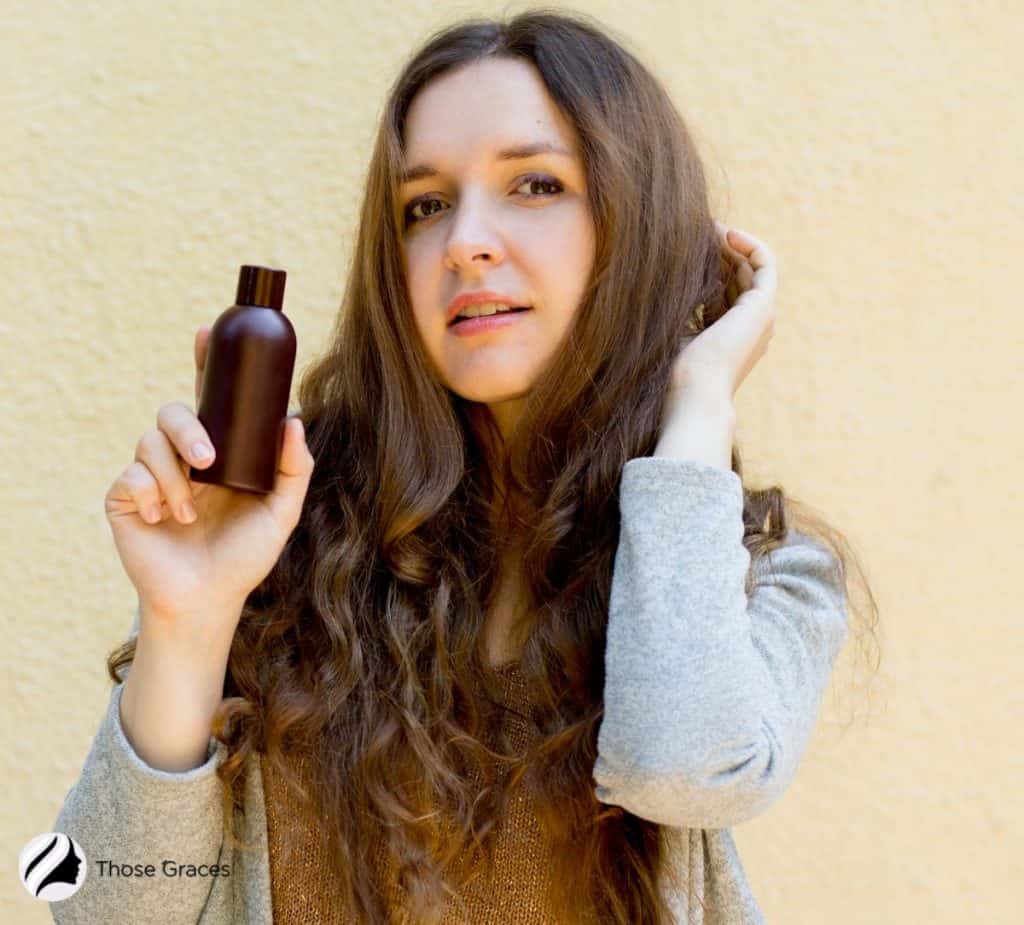
Your hair will cease to appear dull because hair volume improvement also comes with lifting the hair from the roots.
The rejuvenated supply of oxygen and nutrients to hair follicles revitalizes your hair (4).
Your hair stem cells in the follicles are reactivated to replace old cells giving your hair an all-around fresh appearance.
3. It’s the answer to thin hair
Do you have thin hair, and you’ve tried a keratin treatment to make your hair look thicker and fuller? It probably didn’t solve the problem, I guess?
Well, a keratin treatment doesn’t necessarily make your hair look fuller, especially if you have long hair. Your hair will only look smoother and flatter.
Focusing on methods that can help add body to your hair is a good way to help your thin hair.
With the proper application of volumizing products, the thickness of your hair fibers can be increased, enhancing the appearance of your hair volume.
If you have thin hair, watch this video to learn more about how to get body after a keratin treatment:
Cons
1. Coloring your hair to make it appear more voluminous can interfere with your keratin treatment.
I mentioned earlier that one of the advantages of changing hair color is that it helps to create an optical illusion of your hair volume, especially if you choose the right color highlights that fit your hair type.
The process can affect how your keratin-treated hair appears if you go for a color treatment within the first two weeks after your keratin treatment.
The chemical process can prematurely wash off the keratin coating from the outer surface of your hair strands, giving them an uneven overall appearance.
2. Applying styling products on keratin-treated hair can be risky
As I mentioned above, some methods for helping your hair gain body require styling products.
If you use products containing harmful chemicals, your keratin-treated hair can be put at risk of damage, and there could be unwanted results such as hair breakage or porous hair.
I recommend using mild hair care products if you must style your hair after a keratin treatment.
Also, explore my articles ‘Can I Color My Hair After Keratin Treatment?’ and ‘How to Sleep After Keratin Treatment‘ for further hair care insights!
FAQs
How Can I Stop My Hair From Falling After A Keratin Treatment?
You should also avoid using shampoos and other treatments that can contain harsh chemicals.
Is It Safe To Tie My Hair After A Keratin Treatment?
Conclusion
Congratulations, you’re now well-versed in the art of maintaining body and volume after a Keratin treatment!
Think of the knowledge you’ve gained as a magic wand for your hair.
With the proper techniques and products, you can enjoy the benefits of Keratin while still rocking your voluminous look.
Your hair, much like your, is unique and versatile. Whether it’s the oomph of voluminous locks or the silky smoothness of a Keratin treatment, you can have it all.
Isn’t it empowering to know you hold the reins to your hair’s destiny? What’s the next hair adventure you’re planning?
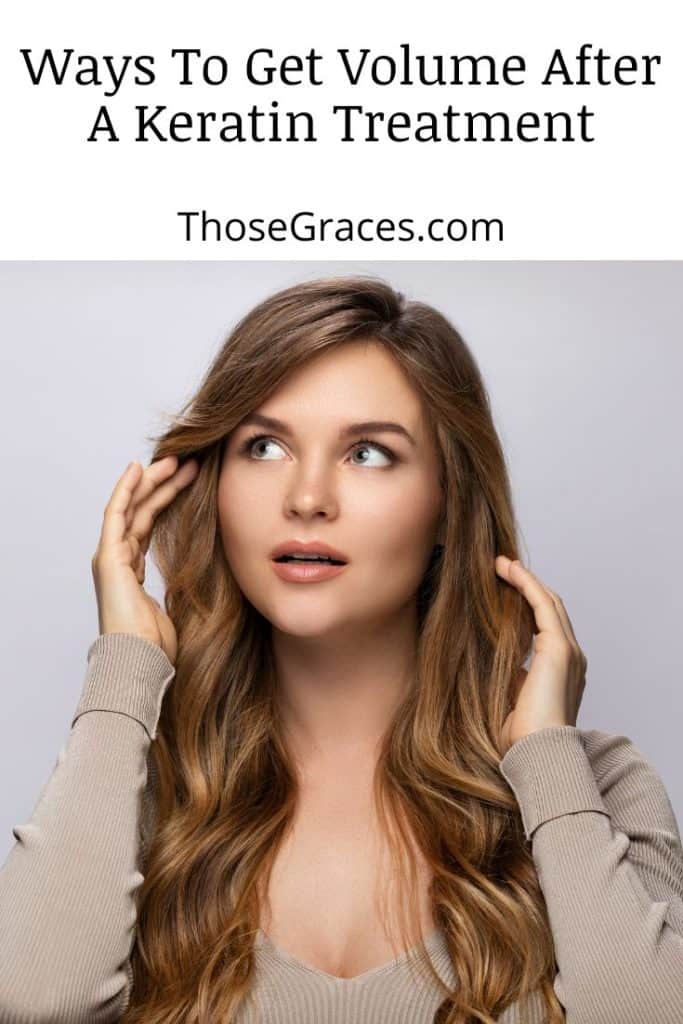
Resources
- 1. Download Limit Exceeded. citeseerx.ist.psu.edu. Accessed September 12, 2022. http://citeseerx.ist.psu.edu/viewdoc/download?doi=10.1.1.603.3752&rep=rep1&type=pdf
- 2. Hair Breakage in Normal and Weathered Hair: Focus on the Black Patient. Journal of Investigative Dermatology Symposium Proceedings. 2007;12(2):6-9. doi:10.1038/sj.jidsymp.5650047
- 3. Rathi S, D′Souza P. Shampoo and conditioners: What a dermatologist should know? Indian Journal of Dermatology. 2015;60(3):248. doi:10.4103/0019-5154.156355
- 4. Paus R, Cotsarelis G. The Biology of Hair Follicles. Epstein FH, ed. New England Journal of Medicine. 1999;341(7):491-497. doi:10.1056/nejm199908123410706

